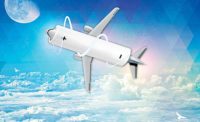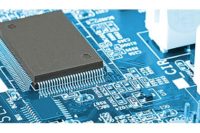Traditionally, automobile dashboards and center consoles have been the domain of buttons, dials and knobs. But, those mechanical devices are about to go the way of running boards, hood ornaments and rumble seats.
In the future, drivers will interact with their vehicles and infotainment systems via gesture, touch and voice technology. Advanced human-machine interface (HMI) features are already available on luxury vehicles produced by Audi, BMW, Cadillac, Lexus, Lincoln and Mercedes-Benz. And, at the Consumer Electronics Show in Las Vegas earlier this year, suppliers such as Continental and Visteon unveiled technology that pushes the envelope even further.
“Technologies and features developed by automakers and suppliers have heavily focused on designing interfaces that users can understand quickly and operate efficiently,” says Mark Boyadjis, senior analyst at IHS Automotive Inc. “Automotive engineers are searching for the perfect intersection between device complexity and user input and output.”
According to Boyadjis, automakers are trying to differentiate their brands through HMI technology, so they’re adopting multimodal interfaces. He says several technologies are forecast to grow 20 percent annually between now and the end of the decade, including touch screens, touchpads, haptic feedback, proximity sensing and gesture recognition.
“Each technology has its pros and cons, and a multimodal HMI is the best way to harness the pros of each while mitigating the cons,” notes Derek Viita, senior analyst at Strategy Analytics Inc. “For example, voice recognition systems are great when they work well, and not so great when an error needs to be corrected.
“But, if a voice recognition system is combined with a touch screen that provides simple visuals during the voice-controlled task, and allows the user to touch suggested commands at any point, this common problem with voice-based systems is mitigated,” explains Viita.
“For gesture controls to work well, the driver needs to be trained on proper hand placement and movement,” Viita points out. “Gesture controls are also very challenging to implement in a moving car, as jostling movements and changing light conditions make it difficult for cameras and sensors to reliably detect gestures.”
In the future, drivers may use advanced technology, such as eye gaze, head direction and image attribute tracking systems, to make vehicle control selections.
Visteon engineers recently developed technology that allows drivers to select controls through eye movement and head direction. The HMeye cockpit concept relies on hidden eye-tracking cameras that capture and process data. It allows vehicle controls, such as the radio, cabin temperature and navigation, to be operated through the drivers’ eyes.
“Eye-tracking works best as a secondary HMI supplemental control, or as a supplemental safety system, not as a primary infotainment HMI control,” claims Viita. “By definition, eye-tracking HMI requires the driver’s eyes to be off the road for a certain period of time for the system to detect a selection. This either encourages abnormally long and unsafe glances, or if a shorter glance can trigger a selection, leads to more errors.”
Touch screens are the most mature HMI technology. But, their sensitivity and reliability still needs improvement.
“Many in-car touch screens suffer from an excessive amount of lag, and don’t work well with gloved hands, which presents a problem in colder-weather environments,” says Viita. “Automakers’ attempts to address this issue have, in turn, directly affected the design of the interior.
“HMI technology makes vehicle assembly different, but not necessarily more complex,” Viita points out. “The main difference is that concerns over physical control location are now shifting to concerns about software code and algorithms, which means that testing and validation procedures will need to be adjusted.”
“Today, HMI components are more and more modular, which reduces the manufacturing complexity of dashboards and consoles,” adds Boyadjis. “However, many automakers are offering three types of optional HMI platform packages, featuring different sizes of displays and navigation systems.
“Those kinds of options can make assembly challenging,” notes Boyadjis. “It’s no longer as simple as just sliding an all-in-one component in and out. Wire harnesses are also affected, because high-speed cabling is necessary to support high-resolution displays.”



